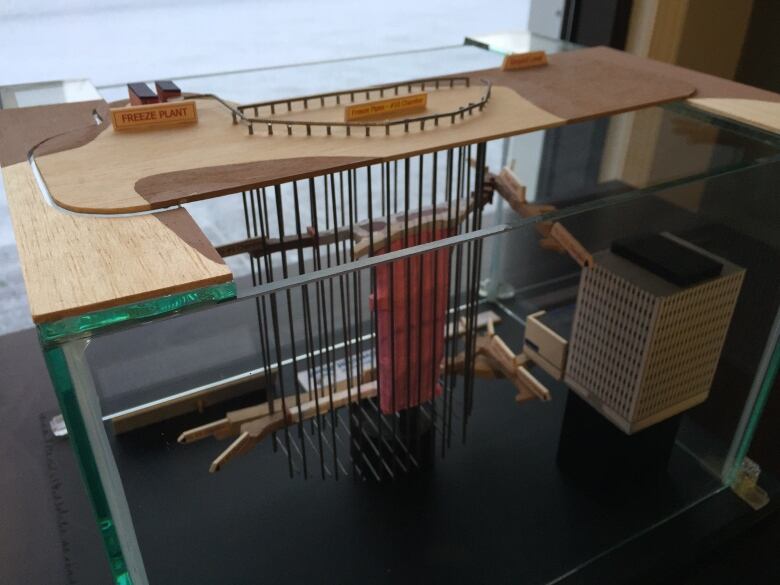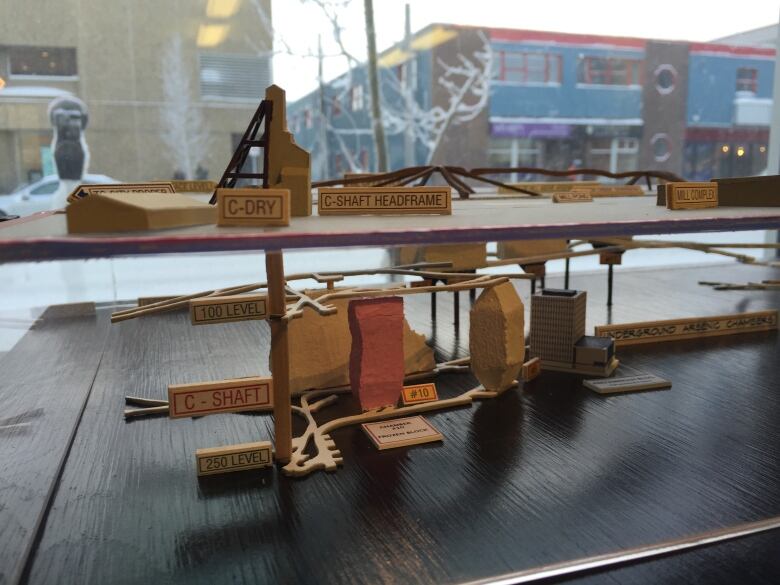Looking for new ways to clean up toxic mess: Giant Mine Oversight Board opens doors
'Our mandate is to look for new solutions or new technologies,' says chairperson

The Giant Mine Oversight Board in Yellowknife is up and running,researching better ways to remediate the 237,000 tons of toxic dust stored in Giant Mine's underground chambers.
- Giant Mine remediation to be monitored by independent oversight group
- FEATURE|Is Yellowknife ready to reckon with its toxic legacy?
The federally funded board was established in 2015, but just recently opened its office in Yellowknife. The board is holding an open house on Thursday.
The boardis made up of six appointed members coming from the federal government, territorial government, City of Yellowknife, YellowknivesDene First Nation, North Slave Mtis Alliance, and Alternatives North. The members serve a four year term and are independent from the group that appointed them.
Kathy Racher, chairperson of the Giant Mine Oversight Board, said the board has three mandates, including overseeing the remediation effort at Giant Mine, public awareness and engagement, and researching new solutions on how to best clean up the tonnes of arsenic trioxide dust stored underground at the mine.
"It will take a combination of technologies to come up with something that will work for this site," Racher said.
"Which is why it is important for [the board]to have its own research program, because no one else in the world is going to do this exact same thing."
Currently, the plan is to freeze the toxic dust in underground storagechambers.

"In about 2001, the federal government commissioned a report on all the best available technology for remediating the arsenic trioxide," Racher said. "They looked at all sorts of methodologies at that time and based on that analysis they came up with the frozen block method."
Racheris hopeful the board can find a more permanent solution. It has commissioned a new 'state of knowledge' report to identify all the advancements in technology since the previous report.
"A lot has happened in 16 years. We all got cell phones, for example. Lots of technology has changed," Racher said.
The new report is dueMarch 31, 2017. Racher said the board will develop a research strategy based on the most promising technologies from the report.
There is no timeline on when a new method toremediateGiant Mine's arsenic trioxide could be implemented.
"If you don't try, if you don't focus your effort, it will never come together," Rachersaid."Our mandate is to look for new solutions and new technologies over the next 20, 40, 60 years."

The board receives about $250,000 annually from the federal government for the research program and $650,000 for oversight and public engagement.
Racher said the board is working with the federal government to allow unused funds to be rolled over into the research budget. She addedthat allowance had previously been agreed to, but still requires approval fromthe federal treasury board, and that she'shopeful the funding issue can be resolved in the calendar year.












_(720p).jpg)


 OFFICIAL HD MUSIC VIDEO.jpg)
.jpg)



























































































